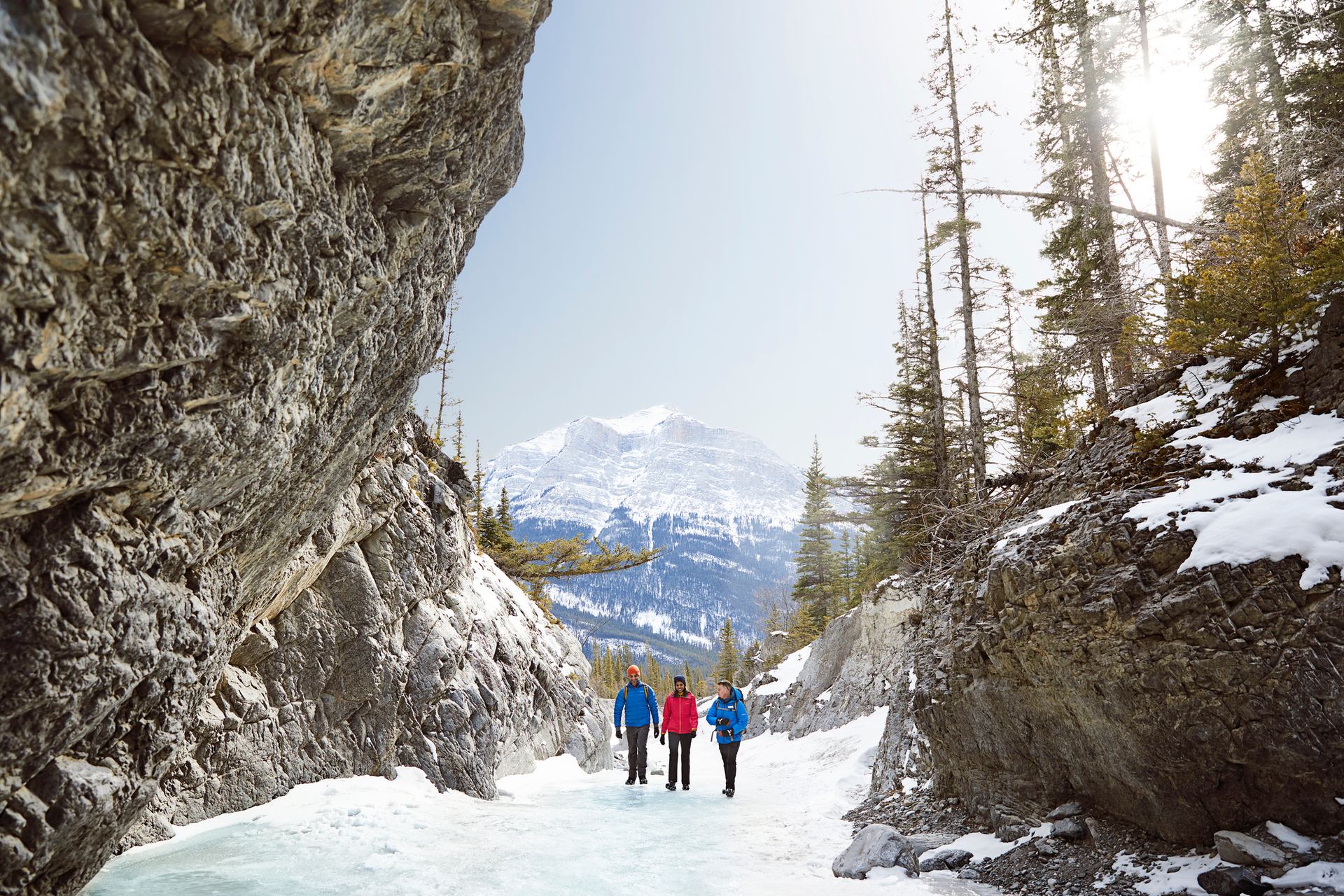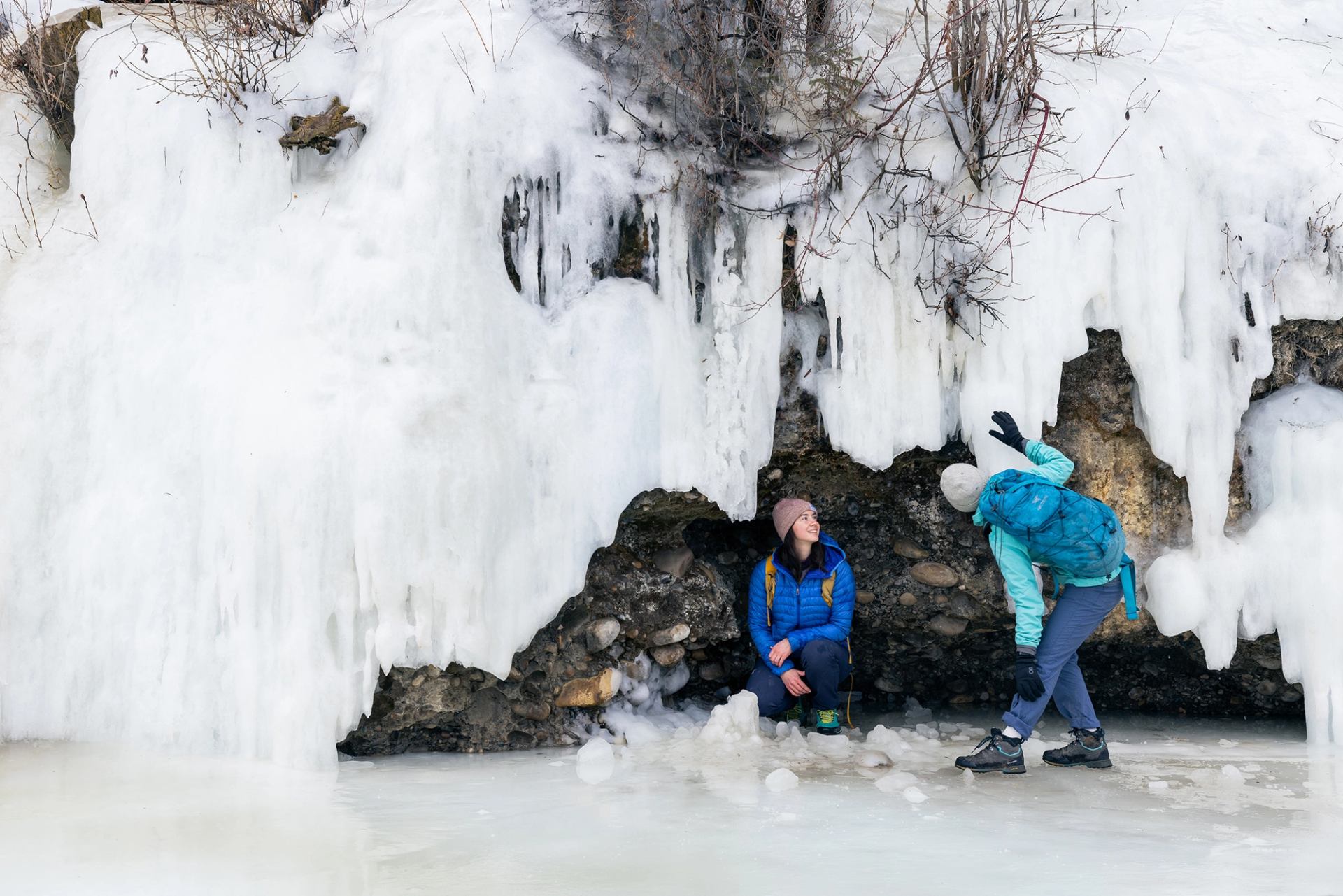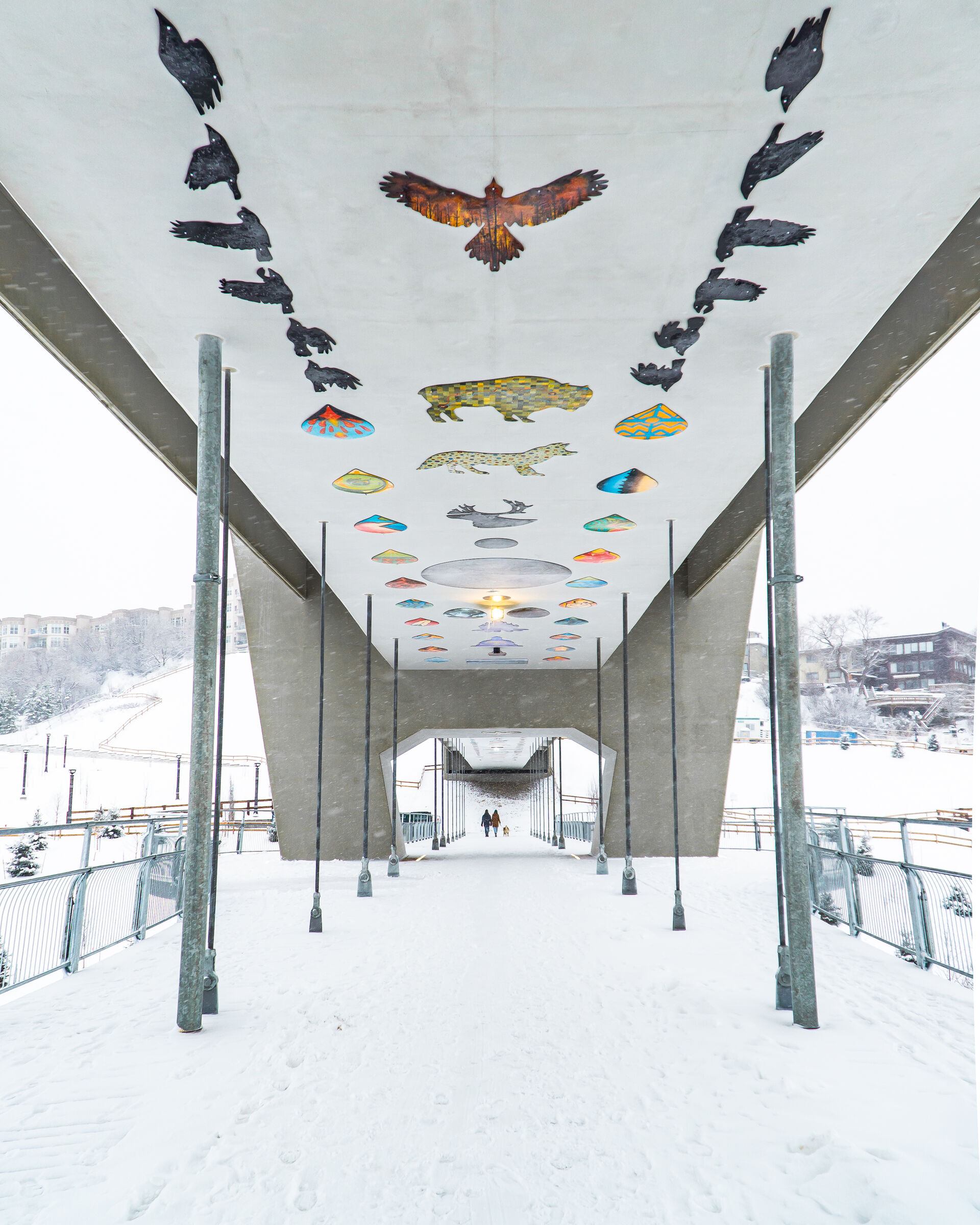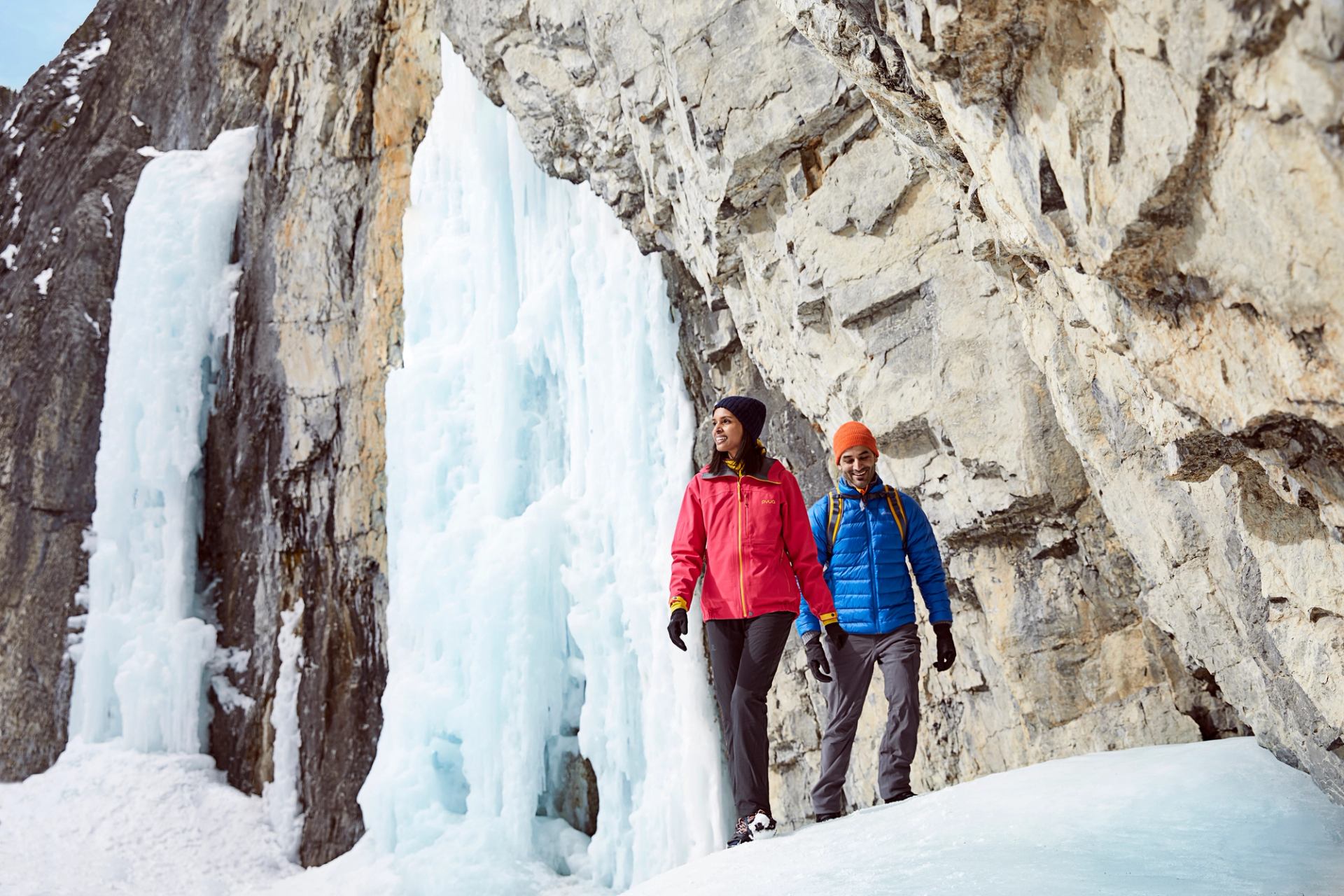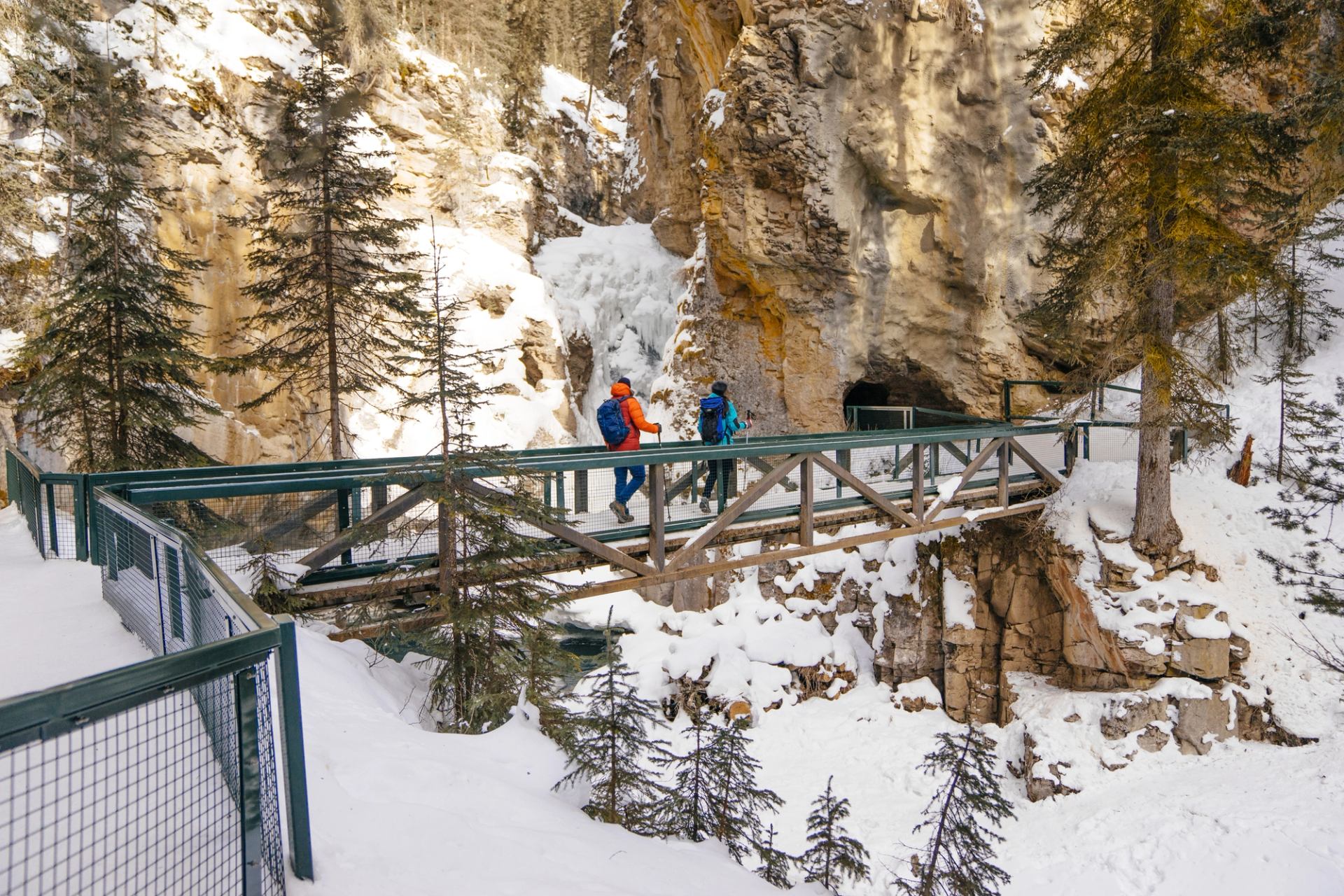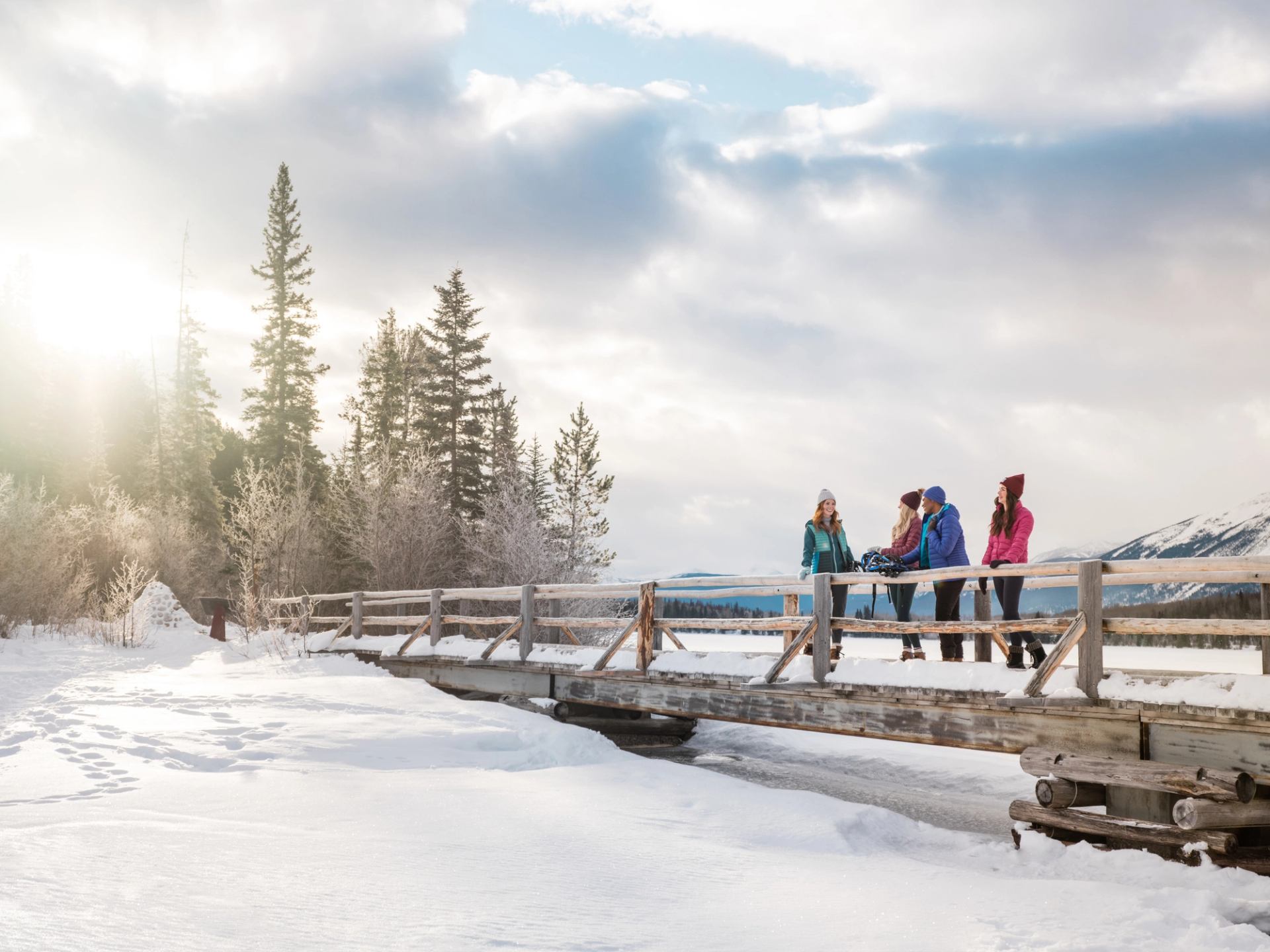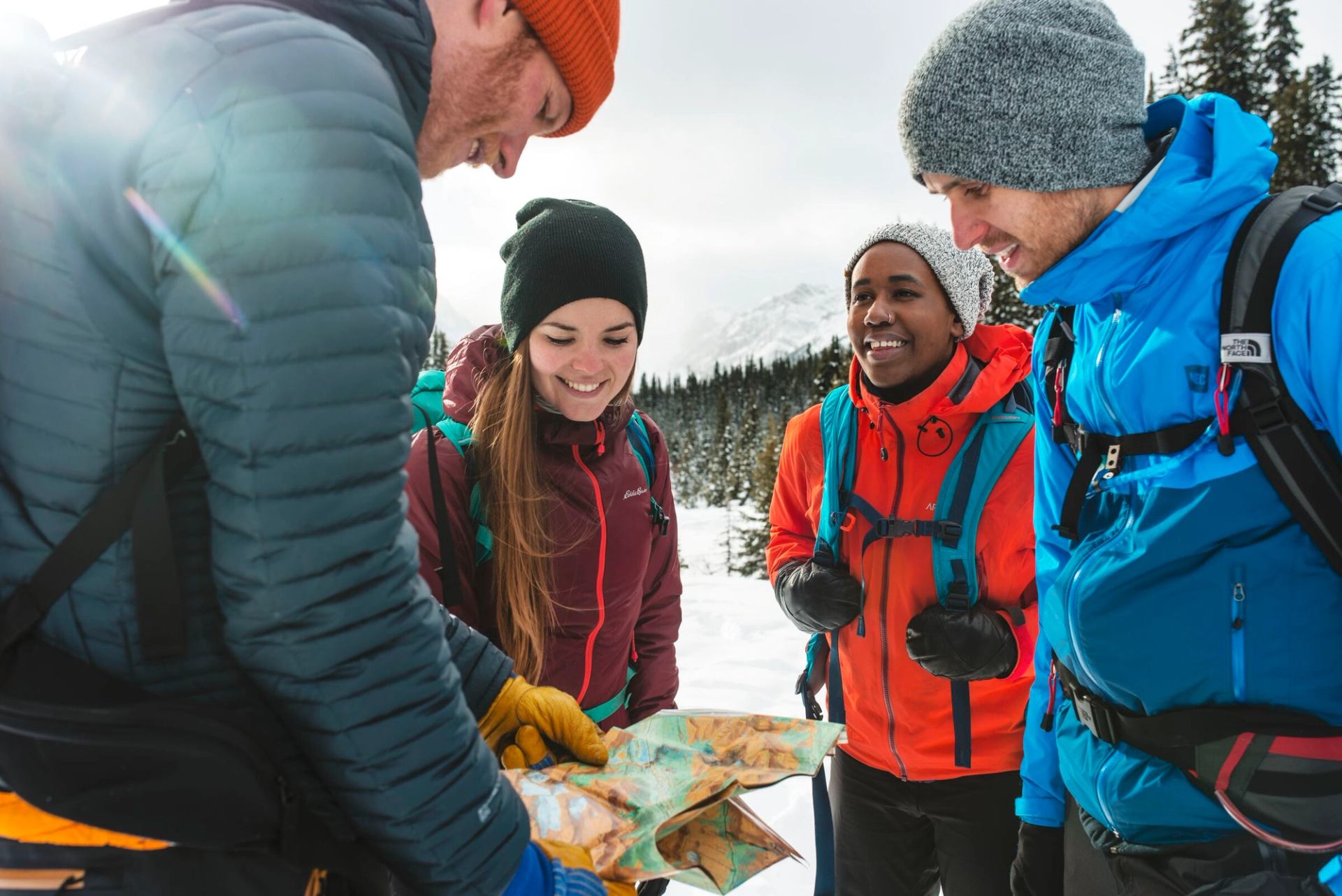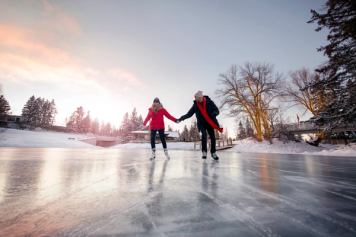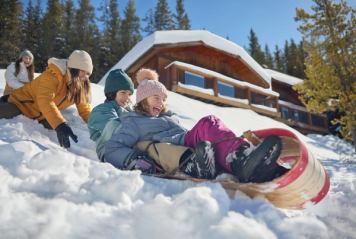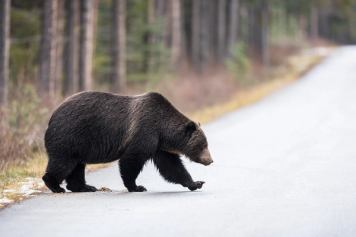The hiking season in Alberta doesn’t end when winter arrives. In fact, some of the province’s best trails are even more beautiful under a blanket of sparkling snow. Many of these trails are ideal for beginners and families, and you can even explore some on a guided experience. A successful winter hiking excursion just requires a little preparation – check out the handy gear checklist and safety tips at the end of this story.
Note: Dogs are welcome on these trails but must be on a leash.
Calgary
This may be Alberta’s largest city, but there’s no shortage of natural beauty. There’s an extensive trail network to explore year-round, plus one of the largest urban parks in North America, all without venturing too far from the city’s best amenities and attractions.
Bow Valley Ranch Loop, Fish Creek Provincial Park
Length: 1.8 km (1.1 mi)
Elevation Gain: 24 m (78 ft)
Fish Creek Provincial Park is one of the largest urban parks in North America, stretching 19 km (12 mi) east to west. There are more than 80 kms (50 miles) or trails throughout the park, and the Bow Valley Ranch Loop is a favourite among locals and visitors. It’s an easy paved loop that travels through a forest grove and wetlands — you’ll even spot ice caves.
Elbow River Pathway: Stanley Park to Sandy Beach
Length: 5.8 km (3.6 mi)
Elevation Gain: 62 m (203 ft)
The Elbow River Pathway runs through the city, and this section from Stanley Park to Sandy Beach makes for an enjoyable winter walk. There are a couple of off-leash areas for your canine companion to enjoy, and the scenery of the Britannia Slopes and Sandy Beach is a beautiful piece of nature in the city. Be prepared to walk up the slopes if you want to stop for a coffee or a bite in the Britannia neighbourhood.
